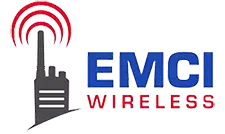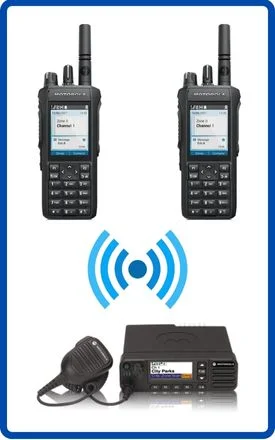
Motorola MTR3000 Base Station/Repeater
Status: Discontinued
Extend Coverage And Capacity Easily with the MOTOTRBO MTR3000 integrated voice and data base-station/repeater.
Motorola has canceled the MTR3000 repeater. If you are looking for a replacement repeater, please check out our current Motorola repeater models.
MTR3000 is a MOTOTRBO™ integrated voice and data base-station/repeater designed to meet the requirements of small public safety, utilities and professional organizations.
The MTR3000 operates in digital mode in MOTOTRBO Conventional, IP Site Connect, Capacity Plus and Connect Plus systems delivering increased capacity, spectral efficiency, integrated data applications and enhanced voice communications.
In addition the MTR3000 can also operate in analogue mode for conventional and LTR®/PassPort® Trunking systems providing a flexible high power base station/repeater.
Feature Highlights
MTR3000 Standard Features:
- Operates in analog or MOTOTRBO digital mode with LED indicating mode of operation
- Reliable 100W continuous duty cycle operation
- 12.5 or 25 kHz programmable channel spacing
- Analog and digital conventions are all standard in one base station without the cost of additional software or hardware
- RoHS (Restriction of Hazardous Substances) compliant
- Power supply functions over a wide range of voltages
- Integrated 100W Power Amplifier and AC/DC
- Power Supply afford minimized cabling, rack space, expense and overall complexity
- Supports UHF, VHF, and 800 / 900 MHz frequency bands
Models
T300
Frequency Compatibility
X330MT – VHF/ 136-174 MHz/ 100W
X340MT – UHF/ 403-470 MHz/ 100W
X540MT – UHF/ 470-524 MHz/ 100W
X450MT – 800 MHz/ 806-870/ 100W
X460MT – 900 MHz/ 869-941/ 100W
Technology Compatibility
Analog
Analog technology is a legacy method of communication that enables the transmission of voice between users over dedicated frequencies. While analog technology has served its purpose effectively for decades, it is rapidly being replaced by digital technology, which offers enhanced clarity, security, and efficiency in communication. Digital technology also provides for the ability to incorporate data protocols, whereas analog operation is typically voice communication only. Nevertheless, analog technology remains a critical part of the legacy infrastructure for many land mobile radio systems, particularly in regions where digital upgrades may still be pending.
Digital
Digital technology represents a modern approach to wireless communication. Unlike analog technology, which uses continuous waveforms, digital technology encodes voice and data into discrete, binary code. This transformation allows for more efficient and secure transmission of information over radio waves. Digital technology offers several advantages, including improved voice clarity, reduced interference, and the ability to transmit data alongside voice communication. It also enables advanced features like encryption for secure conversations, GPS tracking for location services, and the integration of various applications for enhanced functionality. Digital technology has become the standard for many public safety agencies, commercial businesses, and organizations relying on reliable and efficient communication in their operations, making it a crucial component of modern land mobile radio systems.
Radio System Compatibility
Motorola Two-Way Radio Systems
Direct Mode
All MOTOTRBO two-way radios have the capability to connect directly: radio-to-radio, for basic voice, data, text, and application support. However, this approach has limitations.
Conventional
A conventional system is a step up from basic radio-to-radio communications. Radios communicate via a high-power repeater, giving better coverage and more centralized control.







